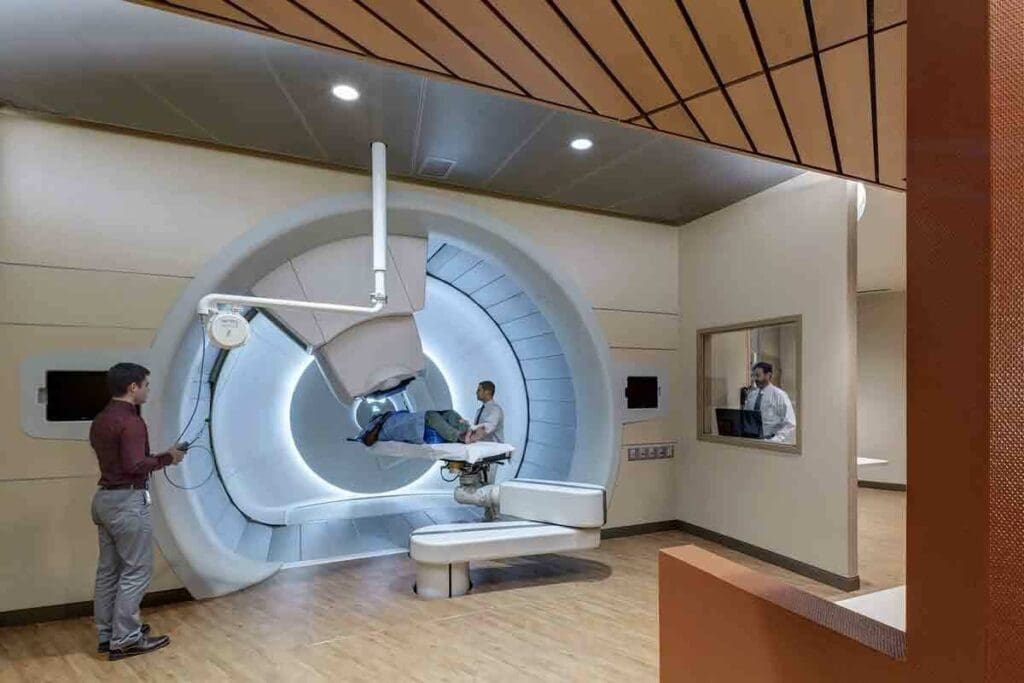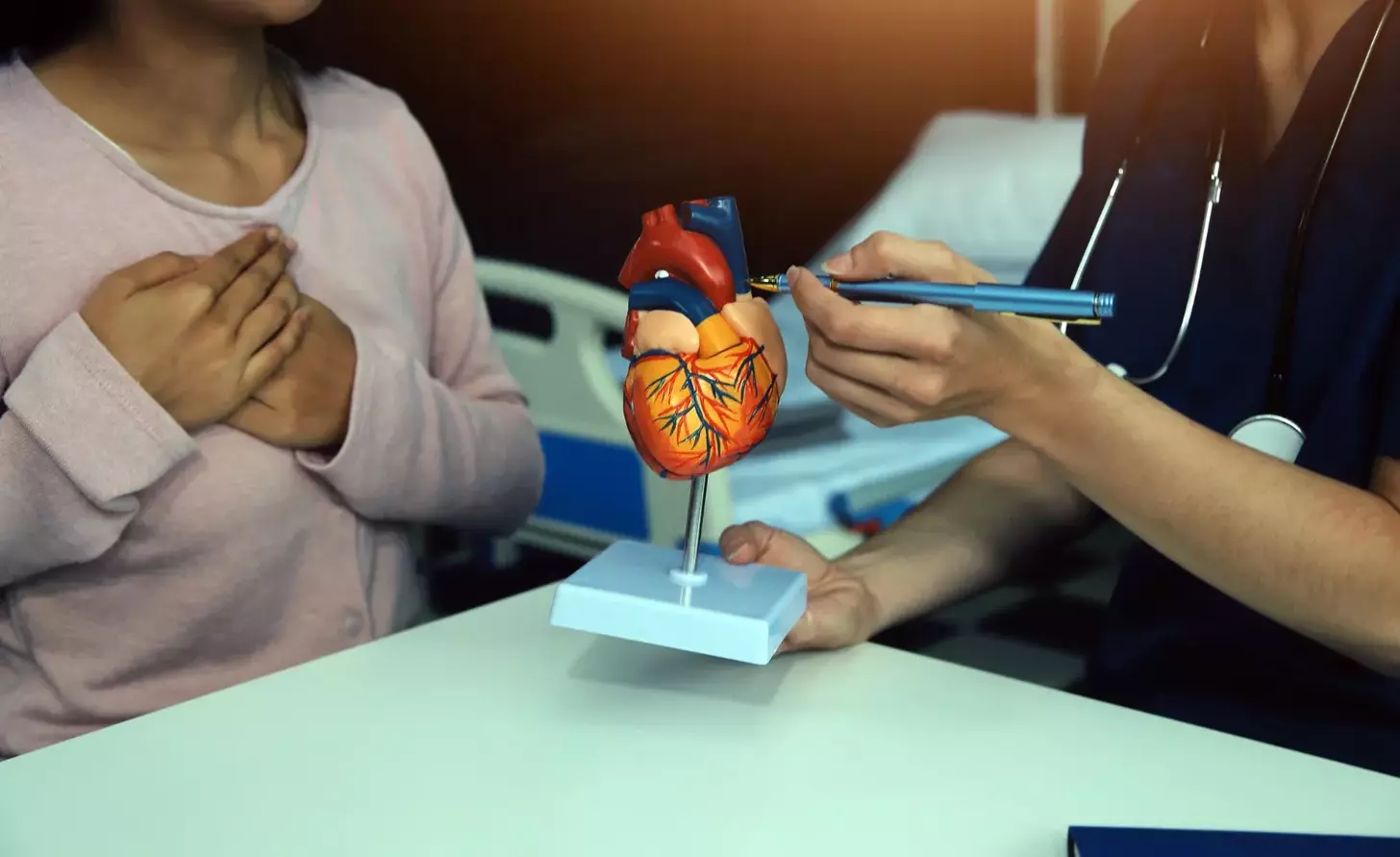Last Updated on November 27, 2025 by Bilal Hasdemir

At LivHospital, we know that a cancer diagnosis can feel overwhelming. Choosing the right treatment is a big decision. Radiation therapy is a key part of cancer treatment. It uses high-energy beams or radioactive substances to kill tumor cells without harming healthy tissue.
We are dedicated to top-notch healthcare and support for international patients. Radiation therapy for cancer works by targeting the DNA in cancer cells. This stops them from dividing and growing, leading to their death.
In this article, we’ll look at the seven main types of radiation therapy used today. We aim to help you understand your options better.
Key Takeaways
- Radiation therapy is a key part of cancer treatment.
- Liv Hospital offers full support and guidance for international patients.
- There are seven main types of radiation therapy for cancer.
- Radiation therapy targets cancer cells’ DNA to stop their growth.
- Finding the right radiation therapy can be complex. But, with the right help, you can make informed choices.
Understanding Radiation Therapy for Cancer Treatment

It’s key for patients to understand radiation therapy for their cancer care. This treatment uses high-energy particles or waves to kill cancer cells. It focuses on the cancer in a specific area of the body.
How Radiation Therapy Works Against Cancer Cells
Radiation therapy damages the DNA of cancer cells, stopping them from growing. When cancer cells get radiation, their DNA is messed up. This makes them unable to divide and eventually die.
This process can take weeks to months, depending on the cancer type and radiation dose. Combining radiation with other treatments like surgery or chemotherapy can make it more effective. The goal is to harm cancer cells while protecting healthy tissues.
The Goal of Radiation in Cancer Treatment
The main aim of radiation therapy is to cure cancer or ease symptoms. For some, it can remove cancer completely. For others, it helps control tumor growth or eases pain in advanced cancer.
Radiation therapy is used in different ways, such as:
- As a primary treatment to cure cancer
- Before surgery to shrink tumors
- After surgery to eliminate any remaining cancer cells
- In combination with chemotherapy to enhance its effectiveness
- To relieve symptoms in advanced cancer cases
When Radiation Therapy Is Recommended
Our team at Liv Hospital decides if radiation therapy is right for you. We consider the cancer type, stage, and location, along with your health.
Decisions on radiation therapy depend on several factors. These include how well the cancer responds to radiation, the tumor’s location, and your ability to handle the treatment. We create a personalized plan to meet your needs.
How Radiation Tumor Treatment Affects Cancer

Radiation tumor treatment is a key part of cancer care. It helps target and destroy cancer cells. This can make tumors smaller or even get rid of them.
Reducing and Shrinking Tumors with Radiation
The main goal of radiation therapy in cancer treatment is to shrink tumors. This makes them easier to remove surgically. It also helps reduce symptoms caused by tumor growth.
When Radiation Can Eliminate Cancer Completely
In some cases, radiation tumor treatment can get rid of cancer completely. This is more likely when cancer is caught early. The success of radiation therapy depends on several factors.
- Early-stage cancers are more likely to be completely eliminated with radiation therapy.
- Tumors located in sensitive areas may require more precise radiation techniques.
- Combining radiation with other treatments can enhance its effectiveness.
Combining Radiation with Other Cancer Treatments
We often use cancer radiation therapy with other treatments like surgery or chemotherapy. This approach helps target cancer cells better. It also lowers the risk of cancer coming back and improves survival rates.
By mixing radiation therapy with other treatments, we offer care that fits each patient’s needs.
7 Types of Radiation Therapy Used in Modern Cancer Care
Knowing about the different types of radiation therapy is key for treating cancer well. At Liv Hospital, we offer a variety of radiation therapies to meet our patients’ needs.
Overview of Radiation Delivery Methods
Radiation therapy comes in several forms, each with its own use and benefits. The main types are external beam radiation therapy (EBRT) and internal radiation therapy. EBRT sends radiation from outside the body, while internal radiation therapy places the source inside the body.
External beam radiation therapy (EBRT) is the most common type. It uses beams from a machine outside the body to target cancer cells. EBRT includes types like intensity-modulated radiation therapy (IMRT) and three-dimensional conformal radiation therapy (3D-CRT).
External vs. Internal Radiation Approaches
Choosing between external and internal radiation therapy depends on several factors. External radiation is often used for tumors near the body’s surface or when cancer has spread.
- External beam radiation therapy (EBRT)
- Intensity-modulated radiation therapy (IMRT)
- Three-dimensional conformal radiation therapy (3D-CRT)
- Stereotactic radiosurgery (SRS) and stereotactic body radiation therapy (SBRT)
Internal radiation therapy, or brachytherapy, places a radioactive material directly into or near the tumor. This method delivers high doses of radiation to specific areas, protecting healthy tissues nearby.
Choosing the Right Radiation Type for Different Cancers
Choosing the right radiation therapy is a complex task. It involves a team of cancer specialists. They consider the cancer’s stage, location, and the patient’s health.
“The choice of radiation therapy depends on the cancer type, stage, and the patient’s overall condition. Our experts work closely with patients to determine the most effective treatment plan.”
The seven major types of radiation therapy used in modern cancer care are:
- External Beam Radiation Therapy (EBRT)
- Intensity-Modulated Radiation Therapy (IMRT)
- Three-Dimensional Conformal Radiation Therapy (3D-CRT)
- Stereotactic Radiosurgery (SRS)
- Stereotactic Body Radiation Therapy (SBRT)
- Proton Therapy
- Internal Radiation Therapy (Brachytherapy)
At Liv Hospital, we aim to provide our patients with the latest and most effective radiation therapy options. We strive for the best outcomes in their cancer treatment journey.
External Beam Radiation Therapy (EBRT): The Foundation Treatment
EBRT is a key treatment in fighting cancer. At Liv Hospital, we use it to target tumors with precision. It gives hope to those with different types of cancer.
What Is External Beam Radiation Therapy
External Beam Radiation Therapy (EBRT) uses beams from outside the body to kill cancer cells. This non-invasive treatment aims to hit the tumor hard while keeping healthy tissues safe.
The EBRT Treatment Process
The EBRT treatment process has several steps:
- Simulation: We use CT scans to plan the treatment area.
- Treatment Planning: Our team makes a plan to give the right dose of radiation.
- Daily Treatment: Patients get radiation therapy, usually 5 days a week, for weeks.
- Follow-up: We check how the treatment is working and manage side effects.
Common Cancers Treated with EBRT
EBRT works well on many cancers, including:
- Breast Cancer: It’s used after lumpectomy to kill any cancer left.
- Prostate Cancer: EBRT is a common choice for early prostate cancer.
- Lung Cancer: It treats both non-small cell and small cell lung cancers.
- Head and Neck Cancers: EBRT helps manage tumors in these areas.
Potential Side Effects and Management
EBRT can cause fatigue, skin changes, and pain. Our team works hard to lessen these effects with advanced tech and care. We help patients manage side effects and improve their life during treatment.
At Liv Hospital, we aim to give top-notch EBRT treatment. Our team works together to make treatment plans that fit each patient’s needs. This way, we increase the chances of a good outcome.
Intensity-Modulated Radiation Therapy (IMRT): Precision Treatment
Intensity-Modulated Radiation Therapy (IMRT) is a big step forward in radiation oncology. It’s a way to send radiation beams that match the tumor’s shape. This helps protect healthy tissues around it.
How IMRT Differs from Standard EBRT
IMRT is different from standard EBRT because it changes the radiation beam’s intensity. This lets different parts of the tumor get different doses of radiation. It’s all about tailoring treatment to the patient’s needs.
Precision is key in IMRT. It lets us aim at tumors near important areas like the spinal cord or brainstem. This way, we can avoid causing too much damage.
Benefits of Beam Intensity Modulation
Modulating beam intensity in IMRT brings many benefits. These include:
- More precise targeting of tumors
- Less damage to healthy tissues
- Potential for better treatment results
- Ability to treat complex or irregular tumors
Ideal Cancer Types for IMRT
IMRT works best for cancers that are:
- Close to important structures
- Shaped irregularly or are complex
- Recurring or have been treated with radiation before
Examples include prostate cancer, head and neck cancers, and some brain tumors.
Side Effect Profile of IMRT
Even though IMRT aims to reduce side effects, it’s not risk-free. Common side effects vary by treatment area. They can include fatigue, skin reactions, and changes in bowel or bladder habits.
“The precision of IMRT allows us to deliver high doses of radiation to the tumor while minimizing exposure to surrounding tissues, potentially reducing the risk of long-term side effects.”
Three-Dimensional Conformal Radiation Therapy (3D-CRT) and Stereotactic Treatments
Advanced radiation therapies have changed cancer treatment a lot. 3D-CRT and stereotactic treatments target tumors precisely. They give high doses of radiation to tumors but protect healthy tissues.
The Technology Behind 3D-CRT
Three-Dimensional Conformal Radiation Therapy (3D-CRT) uses advanced imaging to make a 3D model of tumors and body parts. This lets doctors shape radiation beams to fit the tumor. It ensures the tumor gets the most radiation while keeping healthy tissues safe.
Stereotactic Radiosurgery (SRS) for Brain Tumors
Stereotactic Radiosurgery (SRS) is a precise radiation therapy for brain tumors. It’s not surgery but a non-invasive treatment. SRS is great for small to medium-sized brain tumors, being very precise and protecting the brain.
Stereotactic Body Radiation Therapy (SBRT) for Body Tumors
Stereotactic Body Radiation Therapy (SBRT) treats tumors in the body, not just the brain. It gives precise, high doses of radiation in a few sessions. SBRT works well for small to medium-sized tumors in places like the lungs, liver, and spine, with fewer side effects.
Patient Experience with These Targeted Therapies
Patients getting 3D-CRT, SRS, or SBRT find their treatments precise and effective. These treatments are often non-invasive, so recovery time is short. Patients can quickly get back to their daily lives. Personalized care and advanced technology make treatments fit each person’s needs.
Proton Therapy: Advanced Particle Radiation Treatment
Proton therapy uses protons instead of photons to treat tumors. It’s a cutting-edge method that targets cancer cells with great precision. This helps protect healthy tissue around the tumor.
Differences from Photon Radiation
Proton therapy is different from traditional photon radiation. Photon radiation can travel through the body, harming healthy tissues. But proton therapy focuses its energy right on the tumor, thanks to the Bragg peak.
The Bragg Peak Advantage
The Bragg peak is a key benefit of proton therapy. It ensures the radiation dose is high at the tumor site but low elsewhere. This is very helpful for tumors near important areas like the brain or spine.
Ideal Candidates for Proton Therapy
Proton therapy is best for some patients. It’s great for kids because it reduces harm to growing tissues. Adults with tumors near vital structures also benefit from its precision. Studies show it’s a safer option for some cancers.
Availability and Cost Considerations
Even though proton therapy has many benefits, it’s not as common as traditional radiation. It’s also more expensive because of the advanced technology. But as technology improves, we can expect more access and lower costs.
| Criteria | Proton Therapy | Photon Radiation Therapy |
| Precision | High, due to Bragg peak | Variable, depends on technique |
| Damage to Surrounding Tissue | Minimal | Potential for significant damage |
| Ideal Patient Profile | Children, tumors near critical structures | Wide range of cancer types |
| Availability | Limited | Widely available |
| Cost | Generally higher | Variable, generally lower |
Internal Radiation Therapy (Brachytherapy): Radiation from Within
Brachytherapy is a precise way to treat cancer. It places radioactive sources directly in or near the tumor. This method delivers high doses of radiation exactly where needed, protecting healthy tissues.
Delivery Methods
Brachytherapy comes in two main types: permanent and temporary. The choice depends on the cancer type and tumor location.
- Permanent brachytherapy implants small radioactive seeds or pellets that stay in the body. They emit radiation over time until it’s gone.
- Temporary brachytherapy places a radioactive source near the tumor for a set period. Then, it’s removed.
Cancer Types Treated with Brachytherapy
Brachytherapy treats many cancers, like prostate, cervical, breast, and skin cancers. It’s chosen based on the tumor’s location, size, and stage.
| Cancer Type | Brachytherapy Application |
| Prostate Cancer | Permanent seed implantation is commonly used for localized prostate cancer. |
| Cervical Cancer | Temporary brachytherapy is often used in combination with external beam radiation therapy. |
| Breast Cancer | Interstitial brachytherapy can be used for early-stage breast cancer, providing a shorter treatment than whole-breast irradiation. |
The Brachytherapy Procedure and Experience
The brachytherapy procedure varies by type. For permanent brachytherapy, seeds are implanted under imaging guidance. Temporary brachytherapy uses a catheter or applicator loaded with radioactive material.
Patients might feel tired, swollen, or uncomfortable at the implant site. These effects are usually short-term and managed with care.
Safety Considerations
Safety is key in brachytherapy. For permanent implants, patients learn how to reduce radiation exposure to others, like children and pregnant women. Temporary brachytherapy requires careful handling and shielding to protect everyone involved.
At our institution, we focus on patient safety and comfort during brachytherapy. We ensure our patients receive top-notch care.
Conclusion: Advances in Radiation Therapy and Future Directions
Recent advances in radiation therapy have greatly improved cancer treatment outcomes. At Liv Hospital, we’ve seen the positive effects on patient care. Now, radiation therapy is more precise and effective, with various types for different cancers.
The future of cancer treatment is bright, thanks to ongoing research and new technologies. We’re dedicated to leading in these advancements, ensuring our patients get the best care. As cancer therapy evolves, we expect better treatment results and improved patient lives.
By using the latest in radiation therapy, we can tailor treatments for each patient. This focus on personalized care is key to improving cancer treatment. Our goal is to deliver top-notch healthcare and support to cancer patients globally.
FAQ
What is radiation therapy and how does it work against cancer cells?
Radiation therapy uses high-energy particles or waves to kill cancer cells. It stops them from growing and dividing. This treatment targets cancer cells and can be used alone or with other treatments.
What are the goals of radiation therapy in cancer treatment?
The main goal is to destroy cancer cells and shrink tumors. It can also relieve symptoms like pain and improve life quality.
What are the different types of radiation therapy used in modern cancer care?
There are many types, including External Beam Radiation Therapy (EBRT), IMRT, and 3D-CRT. Others are Stereotactic Radiosurgery (SRS), Stereotactic Body Radiation Therapy (SBRT), Proton Therapy, and Brachytherapy. We choose the best one for you.
How does External Beam Radiation Therapy (EBRT) work, and what are its side effects?
EBRT sends radiation from outside the body to the tumor. It’s usually well-tolerated but can cause fatigue, skin reactions, and changes in bowel or bladder habits. We aim to reduce side effects and improve treatment results.
What is Intensity-Modulated Radiation Therapy (IMRT), and how does it differ from standard EBRT?
IMRT uses precise beams to target tumors, reducing harm to healthy tissues. It’s more precise than standard EBRT, leading to fewer side effects.
What is Proton Therapy, and how does it differ from traditional photon radiation?
Proton Therapy uses protons to destroy cancer cells. It has the Bragg peak, allowing for precise targeting with less damage to healthy tissues.
What is Brachytherapy, and how is it used to treat cancer?
Brachytherapy places a radioactive source near the tumor. It’s used for cancers like prostate, cervical, and breast cancer.
Can radiation therapy cure cancer, and what are the chances of success?
Radiation therapy can cure cancer in some cases. Success depends on the cancer type, stage, and patient’s health.
How does radiation therapy shrink tumors, and what are the benefits of combining it with other cancer treatments?
Radiation therapy damages cancer cells, shrinking tumors and relieving symptoms. Combining it with surgery or chemotherapy offers a better approach to cancer care.
What is targeted radiation therapy, and how does it work?
Targeted radiation therapy uses precise beams to target cancer cells. Techniques like IMRT and Proton Therapy are used for this.
Does radiation therapy have side effects, and how can they be managed?
Radiation therapy can have side effects like fatigue and skin reactions. We work to minimize these and ensure effective treatment.
Reference:
Cambridge University Hospitals NHS Foundation Trust. (2025). Breast radiotherapy: Types and treatment process. https://www.cuh.nhs.uk/patient-information/breast-radiotherapy






